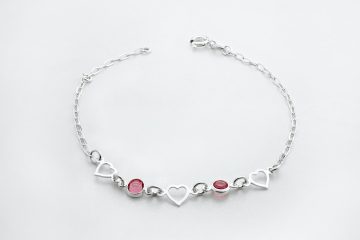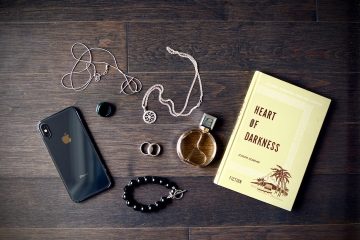Medical emergencies can happen to anyone, at any time, and under any circumstances. Whether it’s a severe allergic reaction, a chronic medical condition, or a life-threatening illness, it is essential for medical professionals to have immediate access to critical medical information in order to provide the appropriate care. This is where medical ID bracelets play a crucial role. These bracelets are not just fashionable accessories, but lifesaving tools that can provide vital information about a person’s medical condition, allergies, medications, and emergency contact details. In this comprehensive guide, we will delve into the purpose and importance of medical ID bracelets, exploring their benefits, and understanding why they are a must-have for individuals with medical conditions.
1. What are Medical ID Bracelets?
Medical ID bracelets are wearable accessories that are specifically designed to provide important medical information about the wearer in case of an emergency. These bracelets typically feature a metal plate or tag that is engraved with essential details such as the person’s name, medical condition, allergies, medications, and emergency contact information. They are available in various styles, ranging from classic metal bands to fashionable silicone or leather bracelets, ensuring that individuals can find a design that suits their personal taste and style.
2. The Importance of Medical ID Bracelets
Medical ID bracelets serve as a visual indicator to alert medical professionals and first responders that the person wearing it has a medical condition or specific needs that require attention. In emergency situations, when time is of the essence, these bracelets provide vital information that can help medical personnel make quick and informed decisions about the appropriate treatment. Here are some key reasons why medical ID bracelets are important:
2.1 Immediate Identification
During an emergency, every second counts. Medical ID bracelets provide instant identification and alert medical professionals about the wearer’s medical condition or special needs. This ensures that the right treatment can be administered promptly, potentially preventing complications or even saving lives.
2.2 Allergy Awareness
Allergies can range from mild to severe and can pose a significant risk in emergency situations. Medical ID bracelets can clearly indicate specific allergies, such as drug allergies, food allergies, or insect bite allergies. This information helps medical personnel avoid administering medications or treatments that could potentially trigger an allergic reaction.
2.3 Chronic Medical Conditions
For individuals with chronic medical conditions such as diabetes, epilepsy, asthma, or heart conditions, medical ID bracelets are particularly crucial. These bracelets provide essential information about the condition, medications, and any specific requirements or precautions that need to be taken into account during treatment.
2.4 Medication Information
In situations where the wearer may be unconscious or unable to communicate, medical ID bracelets provide critical information about the medications the person is taking. This knowledge allows medical professionals to avoid potential drug interactions or provide appropriate medication in case of an emergency.
2.5 Emergency Contact Details
Medical ID bracelets often include emergency contact details, such as the person’s next of kin or a designated emergency contact. This information enables medical professionals to quickly get in touch with someone who can provide additional information about the person’s medical history or make important decisions on their behalf.
3. Who Should Wear a Medical ID Bracelet?
While anyone can benefit from wearing a medical ID bracelet, certain individuals are particularly encouraged to wear one. These include:
3.1 Individuals with Chronic Medical Conditions
People with chronic medical conditions, such as diabetes, epilepsy, heart conditions, asthma, or allergies, should wear medical ID bracelets. These conditions require specific care and treatment, and having this information readily available can greatly assist medical professionals in providing appropriate care during an emergency.
3.2 Individuals with Allergies
Individuals with severe allergies, especially those that can cause an anaphylactic reaction, should wear medical ID bracelets. These bracelets can alert medical personnel to the specific allergen and help them administer the necessary treatment promptly.
3.3 Seniors
As individuals age, the likelihood of having multiple medical conditions or taking multiple medications increases. Seniors are more susceptible to medical emergencies, and wearing a medical ID bracelet can ensure that they receive the appropriate care, even if they are unable to communicate their medical history.
3.4 Children
Children with significant medical conditions or allergies can greatly benefit from wearing medical ID bracelets. These bracelets can provide crucial information to teachers, caregivers, and emergency responders, ensuring that the child’s medical needs are met promptly and accurately.
4. Choosing the Right Medical ID Bracelet
When it comes to selecting a medical ID bracelet, there are several factors to consider. Here are some key points to keep in mind:
4.1 Material and Style
Medical ID bracelets are available in a variety of materials, including stainless steel, sterling silver, silicone, or leather. Choose a material that is durable and comfortable for everyday wear. Additionally, consider the style and design that suits your personal preference and lifestyle.
4.2 Engraving and Information
Ensure that the medical ID bracelet has sufficient space for all the necessary information to be engraved clearly. The engraving should be legible and resistant to wear and tear. Include essential details such as your name, medical condition, allergies, medications, and emergency contact information.
4.3 Size and Fit
Select a medical ID bracelet that fits comfortably on your wrist. It should not be too loose or too tight, allowing for easy wearing and removal. Some bracelets offer adjustable bands or clasps for a customized fit.
4.4 Visibility
Choose a medical ID bracelet that is easily noticeable. Opt for a design that stands out, making it readily visible to medical professionals and first responders in case of an emergency.
5. Maintaining and Updating Medical ID Bracelets
Once you have chosen and acquired a medical ID bracelet, it is important to keep it updated and well-maintained. Here are some tips to ensure the effectiveness of your medical ID bracelet:
5.1 Regularly Review and Update Information
Review the information engraved on your medical ID bracelet periodically. Ensure that it is up to date, including any changes in your medical condition, medications, or emergency contact information. Keep in mind that outdated information could lead to incorrect or delayed treatment.
5.2 Wear the Bracelet at All Times
To ensure maximum effectiveness, wear your medical ID bracelet at all times, even when engaging in regular activities or sleeping. Emergencies can happen unexpectedly, and wearing the bracelet consistently ensures that it is always accessible to medical professionals.
5.3 Inform Family and Friends
Let your family and close friends know about your medical ID bracelet. Inform them about its purpose, where it is kept, and how to access it in case of an emergency. This ensures that they can advocate for you and provide additional information if needed.
5.4 Replace Worn-out or Damaged Bracelets
Over time, medical ID bracelets may become worn-out or damaged. Regularly inspect your bracelet for any signs of wear and tear. If it becomes difficult to read the engraving or the bracelet is damaged, replace it promptly to maintain its effectiveness.
Conclusion
Medical ID bracelets are more than just stylish accessories; they are invaluable tools that can save lives. By providing vital medical information during emergencies, they enable medical professionals to make informed decisions and administer appropriate treatment promptly. Whether you have a chronic medical condition, severe allergies, or take specific medications, wearing a medical ID bracelet ensures that you receive the necessary care when you need it most. Choose a bracelet that is comfortable, visible, and has clear engraving. Keep the information up to date and wear the bracelet consistently to maximize its effectiveness. By taking these measures, you can embrace peace of mind and better prepare for any medical situation that may arise.
FAQs
Q1: Can I wear a medical ID bracelet if I don’t have any medical conditions or allergies?
A: While it is not necessary, anyone can choose to wear a medical ID bracelet as a precautionary measure. It can serve as a helpful tool in case of an accident or emergency, providing critical information to medical professionals.
Q2: What alternatives are there to medical ID bracelets?
A: If you prefer not to wear a bracelet, there are other options available. Medical ID necklaces, wallet cards, or smartphone apps that store your medical information can also be effective ways to convey vital information during emergencies.
Q3: Is it necessary to engrave all my medical information on the bracelet?
A: It is essential to include the most critical information, such as your name, medical condition, allergies, medications, and emergency contact details. However, it is not necessary to include every detail. Focus on the information that is crucial for immediate medical decision-making.
Q4: Can I wear a medical ID bracelet and still maintain my privacy?
A: Medical ID bracelets are designed to balance the need for privacy and the need for critical information during emergencies. By selectively including essential information rather than personal details, you can maintain a level of privacy while still providing vital medical information.
Q5: How can I ensure that emergency responders will notice my medical ID bracelet?
A: Choosing a medical ID bracelet with a design that stands out and is easily visible can help emergency responders notice it quickly. Additionally, consider wearing the bracelet on your dominant hand, as it is more likely to be seen by medical professionals.




